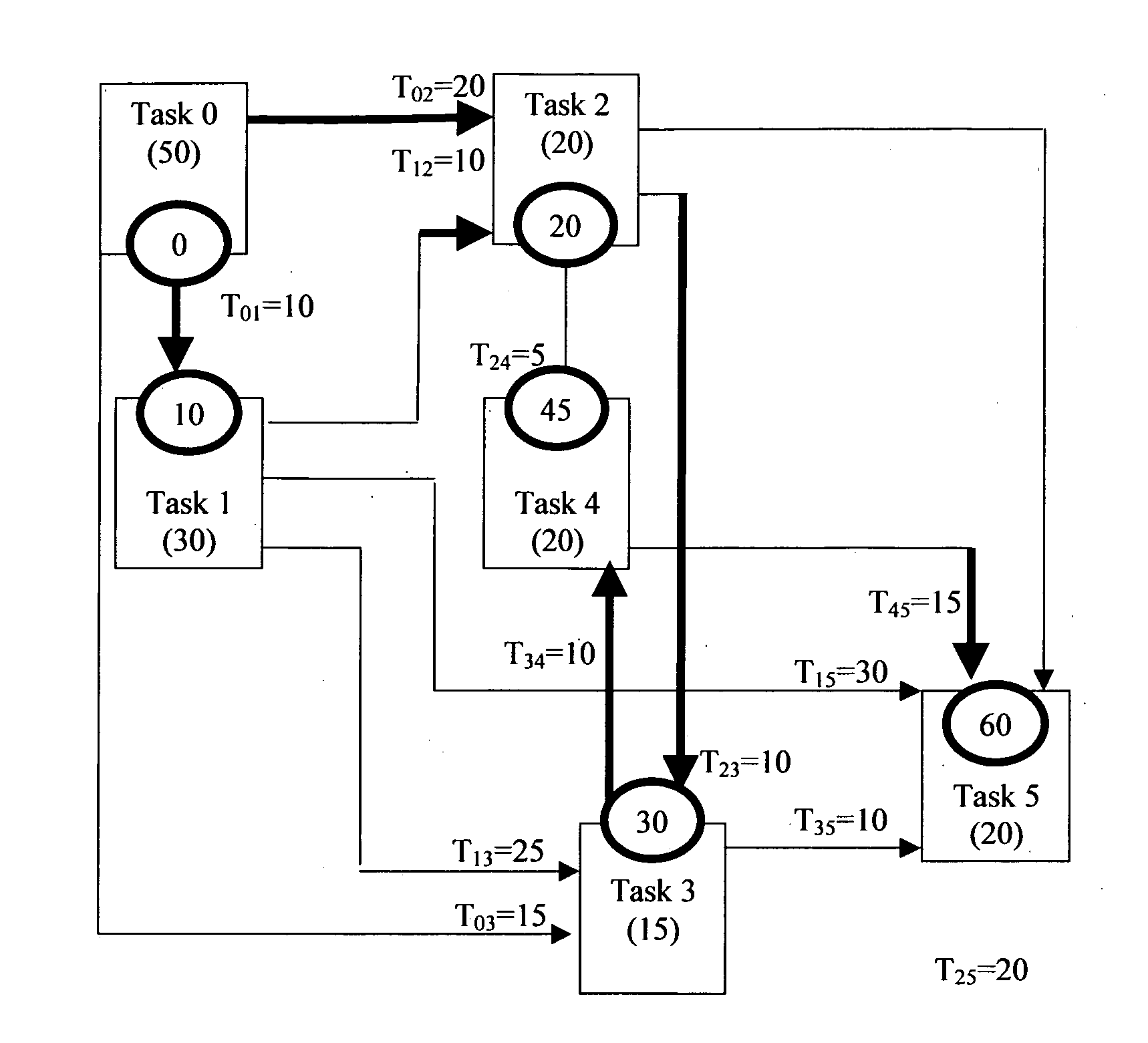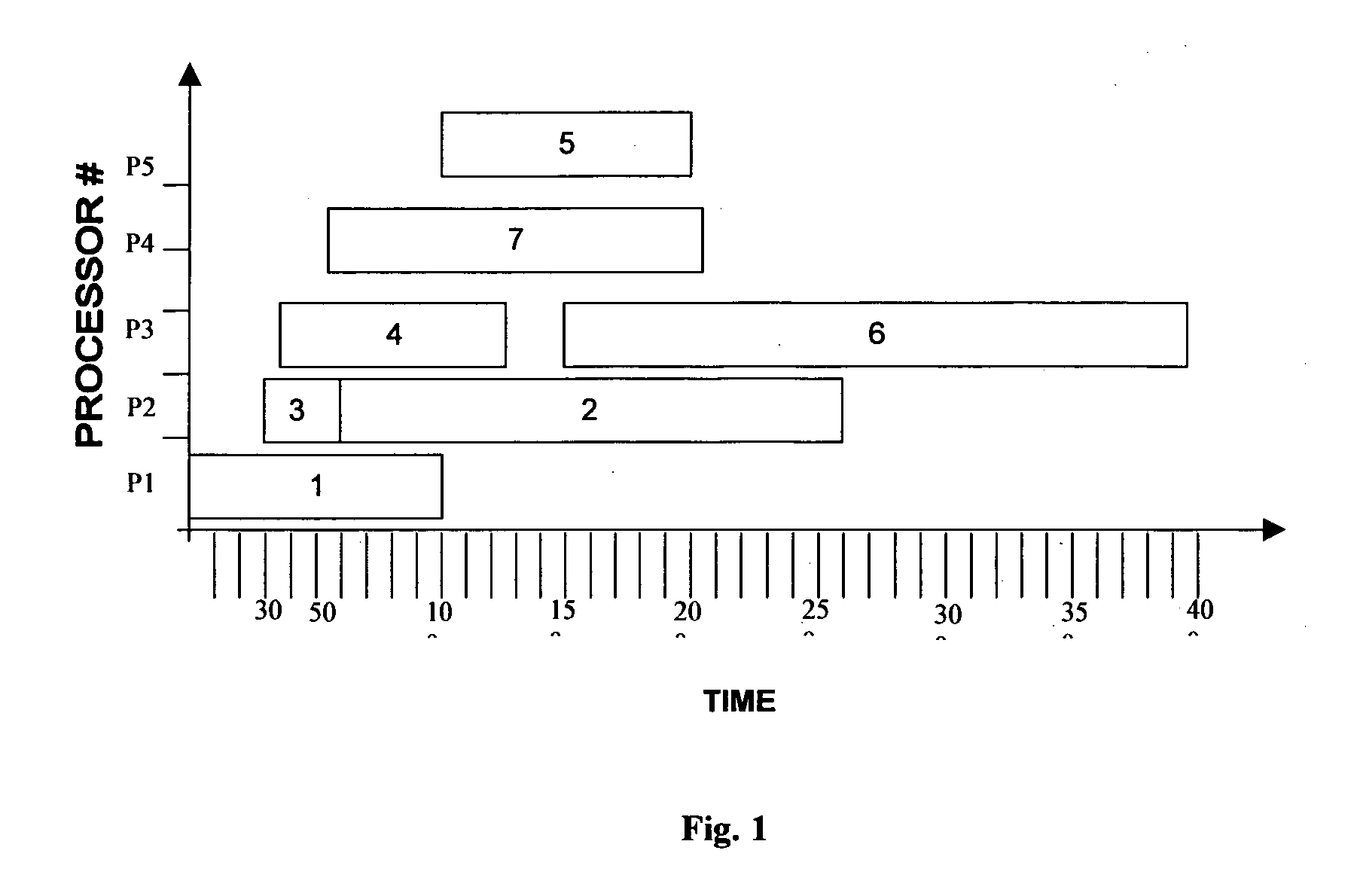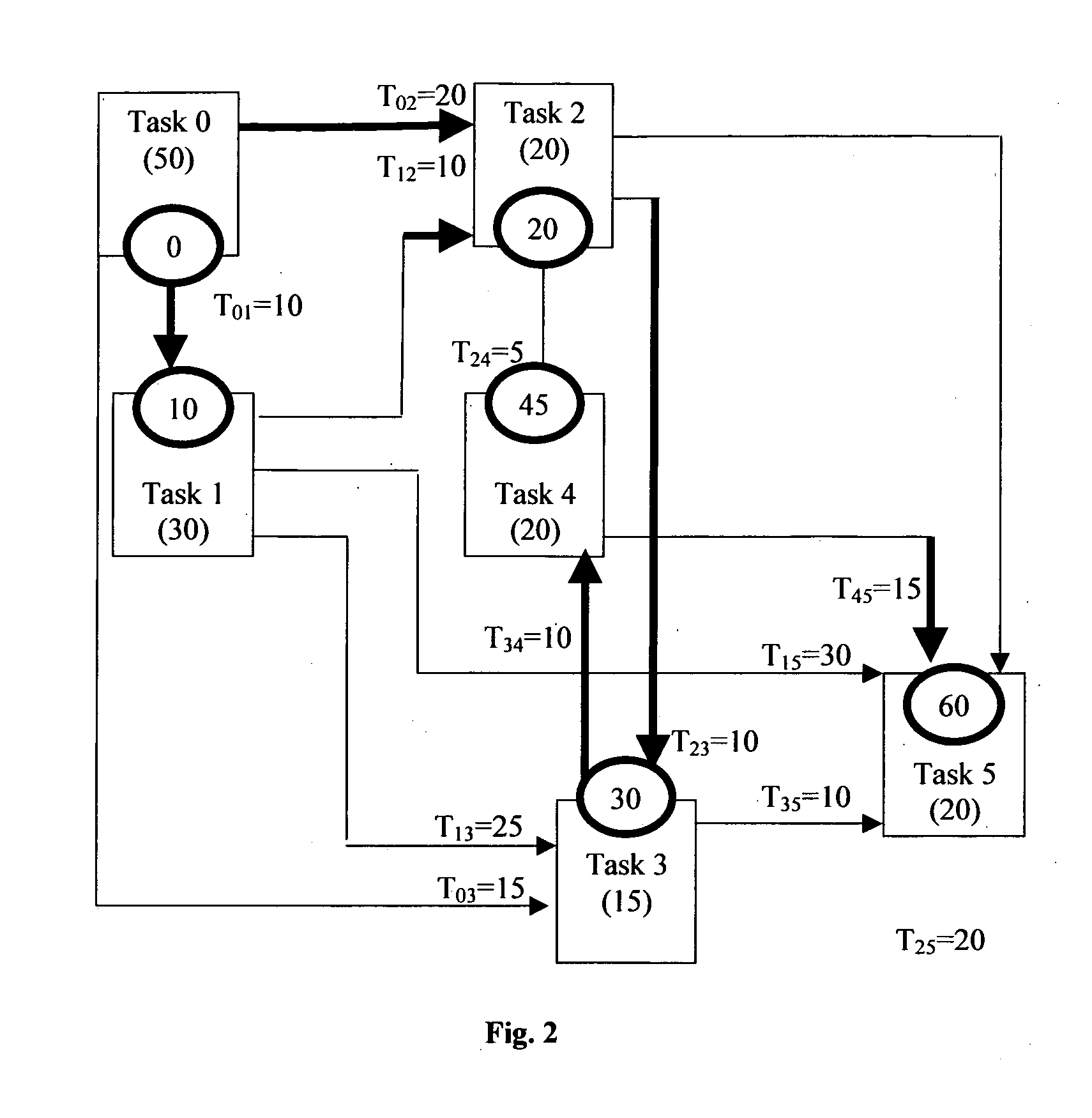Method for reorganizing tasks for optimization of resources
a task optimization and task technology, applied in multi-programming arrangements, program control, instruments, etc., can solve the problems of inability to achieve the overall efficiency of the parallel processing system, inability to determine the optimization of the task in terms of the number of processing elements used, and methods restricted to static or dynamic organizing of tasks
- Summary
- Abstract
- Description
- Claims
- Application Information
AI Technical Summary
Benefits of technology
Problems solved by technology
Method used
Image
Examples
case 1
sk is ready to run and another task is running which have lower priority than the ready-to-run task. In such case, task reorganizer will perform context switching and task having higher priority will start running and task with lower priority will be suspended temporarily. The status of suspended task will be “ready to run” and status of new task will be “running”.
case 2
sk is ready to run and all the tasks that are currently running have higher priority than the new task. In this case, no context switching will happen and the new task will not be executed until processing elements becomes available. Thus, the status of the new task will be ‘ready to run’.
case 3
sk is ready to run and all processing elements are busy. But some task is running which have the same priority as that of the new task. In this case, round robin time slice task reorganizer will be used and both the task will run for specified time. During this time, of some other processor becomes available then both the tasks can run simultaneously on two different processing elements.
[0030]In one exemplary implementation, the system mentioned above is applicable for symmetric multi-processor system. However, the system will run on asymmetric multi-core system as well. In asymmetric multi-processor system, there is one primary processing element, mostly RISC architecture where the application execution takes place and there could be one or more co-processing elements which are specialized for performing certain calculations. The RISC processing element uses secondary processors such as DSP co-processor for executing special instructions and for performing special operations such a...
PUM
 Login to View More
Login to View More Abstract
Description
Claims
Application Information
 Login to View More
Login to View More - R&D
- Intellectual Property
- Life Sciences
- Materials
- Tech Scout
- Unparalleled Data Quality
- Higher Quality Content
- 60% Fewer Hallucinations
Browse by: Latest US Patents, China's latest patents, Technical Efficacy Thesaurus, Application Domain, Technology Topic, Popular Technical Reports.
© 2025 PatSnap. All rights reserved.Legal|Privacy policy|Modern Slavery Act Transparency Statement|Sitemap|About US| Contact US: help@patsnap.com



